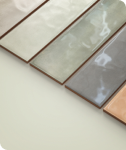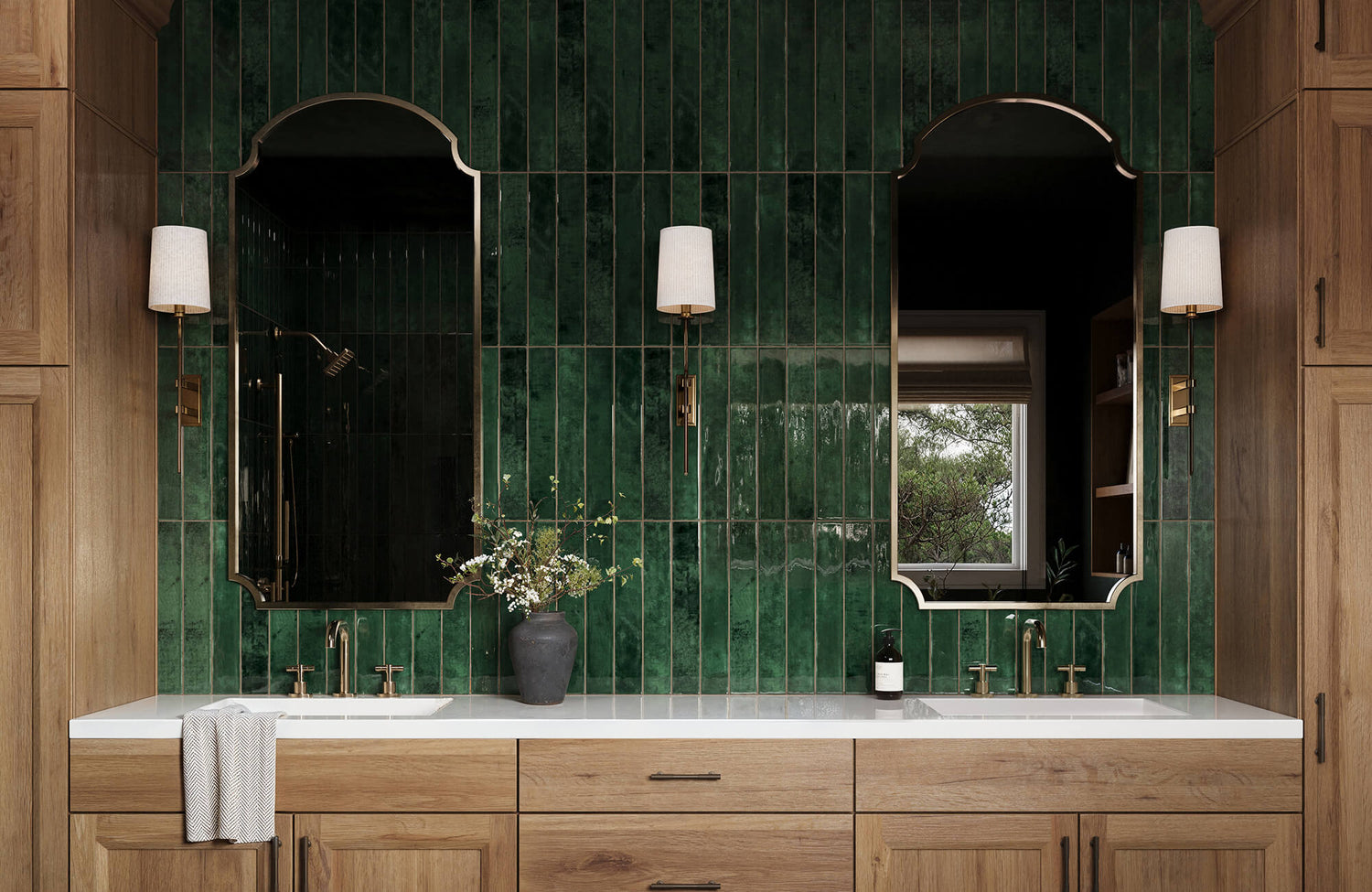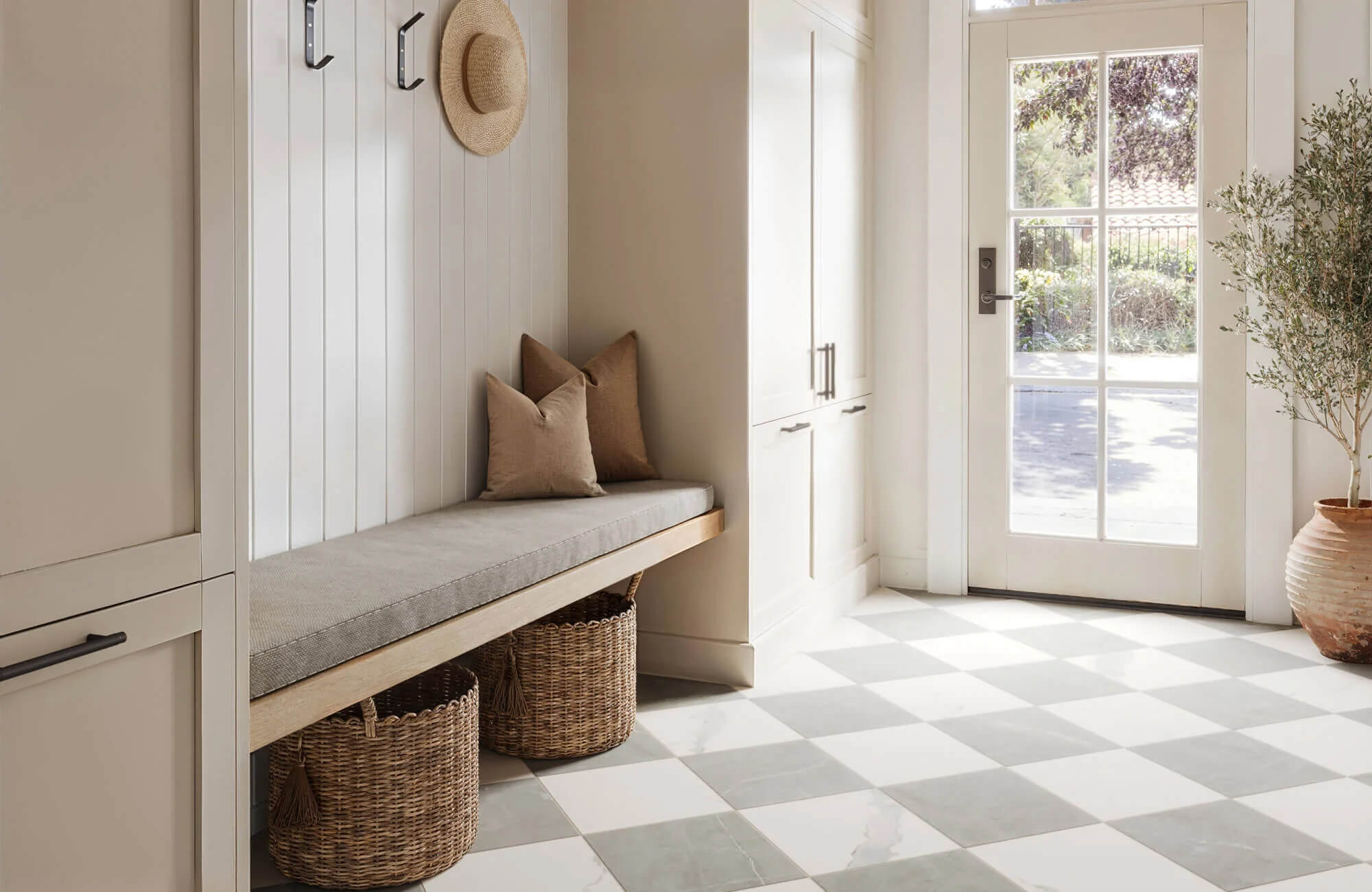Subway tiles may be iconic for their clean lines and understated charm, but their real strength lies beneath the surface. Engineered from ceramic or porcelain and kiln-fired at high temperatures, they form a dense, resilient barrier against moisture, stains, and everyday impact, ideal for spaces that demand both durability and design.
Their longevity isn’t just promised, it’s proven. With proper installation and care, subway tiles resist cracking, warping, and discoloration while offering a wide range of finishes to suit evolving tastes. In this article, we’ll break down what makes these tiles a high-performance favorite and how to keep them looking and functioning their best over time.
Understanding the Composition and Manufacturing of Subway Tiles
To understand why subway tiles hold up so well over time, it helps to look beneath the surface, literally. From the raw materials to the firing and finishing stages, each step directly influences the long-term performance and durability of the tile.
The Role of Ceramic and Porcelain in Subway Tile Durability
At the core of subway tile durability are two primary materials: ceramic and porcelain, each offering distinct advantages. At the manufacturing stage, ceramic is formed from red or white clay mixed with minerals like feldspar and kaolin, then fired at moderate temperatures (typically 1,800°F to 2,000°F). It’s well-suited for most interior wall applications, though slightly porous (compared to porcelain) unless glazed.
In contrast to ceramic, porcelain, a denser and more refined type of ceramic, is fired at significantly higher temperatures, often above 2,200°F. This vitrification process produces a tile that is much harder and less absorbent, with a water absorption rate below 0.5%. As a result, porcelain is better suited for moisture-prone or high-impact areas like showers, backsplashes, and certain flooring applications. Its dense composition also offers superior resistance to scratching, staining, and thermal fluctuation.
Manufacturing Processes and Their Impact on Tile Strength
While material choice is critical, the manufacturing process is also a key consideration. In the initial stage of tile production, raw materials are either extruded or pressed into shape; pressed tiles offer better dimensional consistency, which supports more precise installation. After shaping, tiles are carefully dried to eliminate moisture that could cause warping during firing.
Next, the glazing stage applies a glass-like surface that enhances both appearance and water resistance. Some tiles undergo advanced techniques such as digital inkjet printing or reactive glazing to improve durability and visual depth.
The process concludes with kiln firing, where the tile’s performance is locked in. Roller-hearth or tunnel kilns apply intense, controlled heat that vitrifies the tile body and bonds the glaze. For porcelain tiles, this high-temperature firing results in an exceptionally dense, non-porous product ideal for long-term, heavy-duty use. Precise control during this phase also prevents issues like warping, crazing, or weak glaze adhesion.

Key Factors Influencing the Longevity of Installed Subway Tiles
While the quality of the tile itself lays the foundation for durability, what happens after installation often makes the biggest difference. From how the tiles are set to the conditions they face daily, several external factors can shape their long-term performance.
The Critical Role of Proper Installation Techniques
Even the most resilient tile can underperform if installed incorrectly. Successful installation begins with proper substrate preparation, surfaces must be structurally sound, level, clean, and dry. Substrates like cement backer board, sealed drywall, or concrete are typical, but an uneven base can cause tiles to flex and eventually crack.
In addition to substrate prep, the choice of bonding materials is equally important. Thin-set mortar modified with latex additives is ideal for bonding due to its strength and flexibility. Full mortar coverage and correct troweling techniques, like using the right notch size and direction, are essential to avoid weak spots. For grout, unsanded varieties suit narrow joints, while epoxy grout adds durability and moisture resistance, making it the better choice for wet areas.
Also worth noting is the often-overlooked need for expansion joints, especially in larger installations. They accommodate thermal movement and prevent issues like tenting or delamination. Given the precision required, hiring professional installers is strongly recommended to ensure lasting results.
This meticulous attention to detail is beautifully showcased in the photo above featuring the Maisie 2.5x16 Glossy Ceramic Tile in Ocean, where precise tile alignment, moisture-resistant installation, and carefully selected grout work in harmony to create a refined, functional space.
Environmental Factors and Their Impact on Subway Tile Durability
Beyond installation, environmental conditions are to be considered as well. Subway tiles endure more than just footfall, moisture, temperature fluctuations, and chemical exposure, all significantly affect their long-term integrity. In areas like bathrooms or laundry rooms, high humidity and fluctuating temperatures can challenge ceramic tiles, especially if unglazed or paired with unsealed grout.
Another environmental factor to consider is thermal expansion, which poses challenges in sunlit or heated-floor installations. Exterior or semi-exposed areas also face freeze-thaw cycles, where porcelain’s low absorption rate makes it a more resilient choice. Moreover, chemical exposure from harsh cleaners or industrial residues can degrade tile surfaces and grout, particularly if they’re not sealed or epoxy-based.
Still, even in indoor settings with controlled environments, the right tile selection can make a meaningful difference. For example, the Graham 3x6 Glossy Ceramic Tile in Clay is well-suited for high-humidity bathrooms because of its smooth glazed surface, which resists moisture and minimizes the risk of mold growth. Its warm tone also adds visual comfort to spaces where tile might otherwise feel cold, and when paired with proper ventilation and high-quality grout, it performs reliably in environments with frequent moisture exposure.
Wear and Tear in Busy Areas
In high-use spaces like kitchens, entryways, or commercial interiors, daily wear is inevitable. While subway tiles are most common on walls, select models can be used on low-activity floors if they meet a PEI (Porcelain Enamel Institute) rating of 3 or higher, indicating abrasion resistance.
Besides PEI rating, surface finish also hinges on durability. Matte and satin tiles better conceal scuffs and water spots, while glossy finishes, though elegant, are more prone to visible scratches. On the other hand, textured surfaces offer added slip resistance, which is key in functional areas like prep zones or entryways.
To make selection easier, Edward Martin’s Augmented Reality (AR) Visualization Tool lets you project chosen designs directly into your space. This tool helps visualize finish, color, and layout interaction under real lighting and furnishings. And when you’re ready, tile samples are available for order, allowing for a hands-on preview before final decisions are made.

Maintaining Subway Tiles for Long-Term Durability
Even the most durable subway tiles need a little care to stay looking their best. With the right maintenance habits and a proactive approach, you can prevent common issues and keep your tile installation performing beautifully for years to come.
Regular Cleaning Practices to Prevent Damage
To start, routine cleaning is the first line of defense against tile wear. Use a pH-neutral cleaner to remove dirt and residue without damaging the glaze or eroding grout. Avoid acidic or bleach-based products, which can dull or etch ceramic surfaces over time.
Equally essential is selecting the appropriate cleaning tools. Soft materials like microfiber cloths, non-abrasive sponges, or soft-bristled brushes are ideal. Avoid harsh materials like scouring pads or steel wool, which can scratch glazed surfaces and trap grime in microabrasions. In high-use areas like kitchen backsplashes, weekly cleaning also helps prevent buildup from grease and splatter. For best results, always refer to the manufacturer’s maintenance guidelines to ensure compatibility with your tile type.
Addressing Common Issues Like Staining and Mold Growth
Even with regular care, tile surfaces, especially grout lines, can experience staining or mold in damp environments. Spills from coffee, wine, or oils may cause permanent discoloration if grout is left unsealed. To lift organic stains, apply a baking soda paste or oxygenated bleach, allowing time to work before gently scrubbing.
For mold and mildew, common in showers or poorly ventilated bathrooms, hydrogen peroxide or mold-specific cleaners are effective alternatives to harsher chlorine-based solutions. Additionally, preventive measures, such as improving ventilation and wiping down surfaces after use, help keep these issues at bay.
A real-world example of this is Edward Martin’s Natasha 2x6 Glossy Porcelain Tile in Oat, which demonstrates how a non-porous glazed porcelain surface simplifies maintenance. Its dense body effectively resists moisture and stains, making it ideal for areas exposed to splatter or humidity.
The Importance of Periodic Sealing and Maintenance
Beyond daily care, sealing is a critical part of tile maintenance, especially for grout. While most glazed tiles don’t require sealing, cementitious grout is naturally porous and vulnerable to staining unless protected by a penetrating sealer that fills the pores and blocks out moisture and grime.
How often you reseal depends on exposure. In wet or high-activity zones, sealing may be needed every 6 to 12 months. A quick water-bead test can help determine when it’s time to reapply. Additionally, in harsher environments, even tile surfaces, particularly if unglazed, can benefit from sealers that boost chemical resistance and ease cleaning.
This is well illustrated by Edward Martin’s Aniston 3x12 Polished Porcelain Tile in Calacatta Quarzite. While the polished porcelain repels stains naturally, the surrounding white grout lines benefit from regular sealing to maintain contrast and cleanliness. In such cases, periodic inspections and touch-up sealing further extend both visual appeal and structural longevity.
The Proven Resilience of Subway Tiles
Taken together, these maintenance strategies underscore the historic appeal of subway tiles. They continue to earn their place in modern design not just for their look, but for the craftsmanship behind their strength. Their durability also stems from high-performance materials, precise manufacturing, and smart installation, factors that ensure long-term resilience across a wide range of environments.
As styles shift and spaces evolve, subway tiles remain a trusted choice for projects that demand both beauty and endurance. If you’re planning a space built for the long haul, our team at Edward Martin is here to help you make informed, lasting decisions with confidence.








